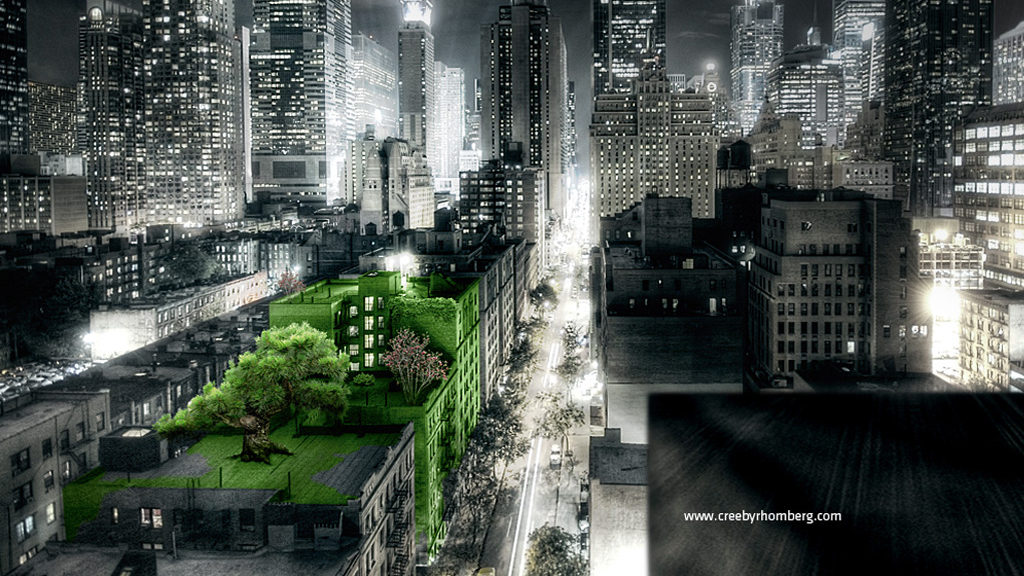Sustainability is a value that every company likes to pride itself on. In practice however most limit themselves to "end-of-pipe solutions" - i.e. downstream environmental protection measures. An Austrian construction company is calling on its industry to rethink its approach.
Construction and innovation - that's actually a contradiction in terms, because as a rule one has nothing to do with the other. Construction is generally regarded as the second oldest trade in the world. From a technological point of view, a lot has changed in terms of products, but in principle we are still building as we did in the Stone Age. That's a bad foundation if you want to be innovative in this field.
I took over my company from my father ten years ago. At the time, I was thinking about how I should further develop the company, what opportunities were even available to us. It was clear to me that I wanted to achieve something in my life. And that I had to do something if my company was to still exist in 20 or 30 years. So I started thinking about the future of construction.
What is clear is that this future lies in the city. Half of the human population already lives in cities and in 20 or 30 years that figure will be 75 percent. The population is growing at a rate of 80 million per year - hence the world's population is increasing by the size of Germany every year. This growth is taking place in cities alone, which is why innovations are needed there as well. As far as energy supply and mobility are concerned, a lot will change in the coming years. We will see completely new traffic concepts, and so-called urban farming will play an increasingly important role in food production. The question is: Where will all the resources come from that will make such growth possible? If we take the current lifestyle of Europeans as a basis, we would need two and a half planets. Americans would need four planets. The problem is: We only have this one planet and the constant scarcity of resources will sooner or later lead to serious problems - geopolitically and socially.
The raw material of the future
When we talk about resource scarcity, many people primarily think of water, oil or rare minerals. Few know that sand is one of the world's scarcest commodities. At the same time, it is the raw material that the construction industry needs most - to make concrete. Beaches in Australia and Africa are cleared away and brought to Chicago or Dubai so that high-rise buildings can be built there. And that is just one example. We urgently need to think about which raw materials we will need in the future and where they should come from. We have learned to fly and move around without muscle power, but we have not yet learned to make two out of one. In the future, this will be a key issue.
So in the future, we will have to build up higher in cities because space is at a premium. And we will have to use other building materials because the ones we have been using up to now are becoming increasingly scarce and too energy-intensive. And there is a third dimension: We will have to develop an efficiency that we have had in the industry for a long time, but which has not yet played a role in construction. In a way, every house is a one-off - that has to change.
I thought about all these aspects when I was considering where I wanted to take my company. I set myself the goal of constructing buildings that consume five to ten times fewer resources than conventional houses - as this is a prerequisite for us to be able to cope with growth in cities. The result of my thinking: I'll develop high-rise buildings made of wood.
Wood is unbeatable
Most people are sceptical when they first hear about it. They think wood is a thing of the past. A hundred years ago, people built with wood - it was cheap, often not very beautiful, and every now and then entire neighbourhoods burned down.
When I talk about wood, I'm not referring to the wood that once was used for construction. I'm referring to so-called glulam beams, which are easy to work with, have extremely high strength and weigh very little. The buildings we develop are only half as heavy as concrete houses. The foundation - the part of the house embedded in the ground - can therefore be much simpler. In the event of an earthquake, our house is much safer because the energy of the quake comes from the inertia of the building's mass.
In terms of resource conservation, wood is unbeatable. To produce one ton of copper, we need 500 tons of nature. For one ton of steel we need eight tons, and for one ton of concrete we need to move five tons of nature. For one cubic meter of wood, we only need 0.2 cubic meters extra - in waste and energy input.
The fear of fires is also unfounded. When I recently presented our construction projects in Berlin, I had to answer the question about fire safety a dozen times. At one point, the head of the Berlin Fire Department came on stage, took the microphone from my hand and said "I want to tell everyone in this room that in case of a fire, I'd rather be in a building made of wood." Why? When a steel building burns and the steel reaches a temperature of 780 degrees Fahrenheit, it fails. It softens, and the building collapses without notice. Our wooden structures can also burn, but they only burn two millimetres per minute. This means that even if the fire can rage unhindered for 90 minutes, nothing yet will happen.
Urban mining as a model for the future
When people ask me how long a wooden house like this lasts, I ask back: What part of the house do you mean? We have to get away from the idea that a building is ONE building. Our wooden high-rise buildings are systems that consist of many elements that are coordinated with each other. The primary structure - the load-bearing walls, columns and core - will last 100 to 150 years. The facade can be replaced after 40 years. The building services panels can be upgraded over time. This is the right way to go, but hardly anyone in the construction industry is following it so far.
Most houses today are built as units, all parts of the whole are connected, for better or worse. And when the building has to be demolished, everything has to be disposed of. That's not sustainable. If we want to act responsibly, we have to enable Urban Mining. That means extracting the raw materials of tomorrow from today's cities. A third of the world's raw materials have already been built up. The next generations will have to reclaim these raw materials. And they will look back at 2014 and think, "What a disgrace. They knew resources were running out and yet they didn't design and build so we could reuse the components." We are currently pouring millions into exploring underground storage to get rid of our CO2. Imagine if someone instead found a way to put that CO2 to good use - a fuel, for example, that could be made from CO2 and reused after use. The government and industry would be thrilled and invest millions. We already have a building material today that offers exactly these benefits. We're building passive houses out of wood - 100 meters high, in six months. Wood is the only material that nature itself produces directly, extracts CO2 from the atmosphere and produces oxygen. We use it in a high-rise building, and after 150 years we can dismantle the parts and use them for another building or burn them. That is sustainability. The problem is that there is still no industry behind it to drive development. And that urgently needs to change.



